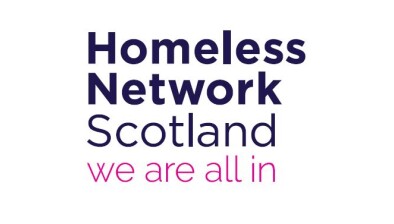Lisa Borthwick: Another step to strengthening rights
Lisa Borthwick
Changes to local connection legislation, which come into force today, that suspends the power of Scottish local authorities to refer people who present as homeless to another area is a long time coming, says Lisa Borthwick at Shelter Scotland.
Tuesday 29 November is a momentous day for housing and homelessness rights in Scotland. As of today, anyone presenting as homeless can seek support from a local authority of their choosing, because people no longer need to have a connection to the local authority they are seeking homelessness assistance from – so-called ‘local connection’ rules.
The change has been a long time coming and one that we have long called for. Two decades ago, the Homelessness Taskforce recommended that the ability of local authorities to refer households to another geographical area should be suspended. In 2018, the Homeless and Rough Sleeping Action Group made the same recommendation, adopted by the government and COSLA in the Ending Homelessness Together Action Plan, and finally coming into force today.
Looking at the responses to the various consultations on local connection changes over the years, I think it’s fair to say that there’s always been broad consensus that this move is the ‘right’ thing to do. That if we want to embed a person-centred, ‘no wrong door’ approach as advocated for in the current national homelessness strategy, people need to be able to choose where they seek support from, where they choose to resettle, and where they choose to build foundations in a new home.
Underpinning this change to local connection is the right to live in a decent, affordable home in the best place for the household, which could include living in an area to gain employment, being close to family for support, or getting away from a violent or damaging environment. Taking a person-centred approach and ensuring people experiencing homelessness have options and choice and control over their housing leads to improved housing outcomes in the long run. It aligns with a human rights approach which embeds dignity in the system by making sure that people both have the right and are empowered to make informed decisions on where they would like to apply as homeless – and live.
The apprehension about this change has come from concerns of possible increased demand in some areas. And we certainly recognise today’s challenges in terms of the pressures local authorities are facing, the pressures individuals are facing, and the sheer scale of the housing emergency. But it is vital that people can choose where they live, and so instead, our attentions should be focused on what local authorities require to uphold rights in Scotland.
We need to ensure those responsible for meeting people’s housing needs and rights have the resources to do so, both in terms of funding and physical homes. Our Scottish Housing Emergency Action Plan outlines the steps the Scottish Government needs to take to tackle
Scotland’s housing emergency and move to a place where housing rights can be realised. As the Cabinet Secretary Shona Robison said in the Scottish Parliament committee session considering the change in local connection rules when asked about the challenges local authorities face, all roads lead back to a lack of supply.
If we are to live up to the aspirations of this further strengthening of housing rights, Shelter Scotland’s message is simple: deliver the social homes needed in the right places to reduce housing need, fully fund homelessness services, and guarantee these vital housing rights.
- Lisa Borthwick is advocacy manager at Shelter Scotland







